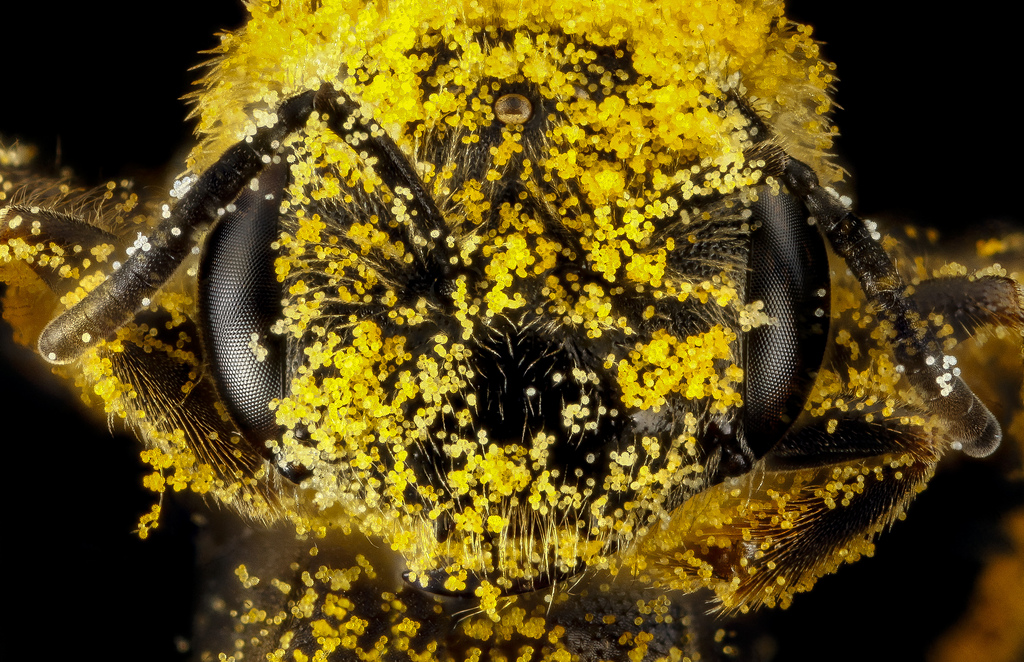Interactions
Rhododendron ponticum is involved in mutualistic relationships. One of these mutualistic relationships is with bees, hoverflies, and butterflies that pollinate the flowers. The insects use the plants’ nectar to make their food such as honey for the bees. When an insect lands on a flower, pollen sticks to the insect. The pollen is then transported when the insect flies to another flower and consequently the flower becomes pollinated.
©USGS Bee Inventory and Monitoring 2013
 However, a negative consequence can come from this mutualistic
relationship between bees and flowers of Rhododendron ponticum. The bees
use the nectar from the flowers to make honey, but the honey may be
toxic to some organisms. Then when organisms, particularly mammals,
ingest the honey they can experience serious symptoms. Read more
about 'Honey intoxication' on the
Andromedo-toxin page.
However, a negative consequence can come from this mutualistic
relationship between bees and flowers of Rhododendron ponticum. The bees
use the nectar from the flowers to make honey, but the honey may be
toxic to some organisms. Then when organisms, particularly mammals,
ingest the honey they can experience serious symptoms. Read more
about 'Honey intoxication' on the
Andromedo-toxin page.
©Luis Miguel Bugallo Sánchez 2010
Another positive relationship that Rhododendron ponticum has is with mycorrhiza. Mycorrhiza is a fungus that lives in the roots of Rhododendron ponticum. This is an example of a mutualistic relationship because both organisms are being affected positively. The plant is receiving phosphorous, potassium, and nitrogen from the fungus while the fungus is receiving sucrose from the plant. To see how this interaction is also a great adaptation, click here.
.jpg)